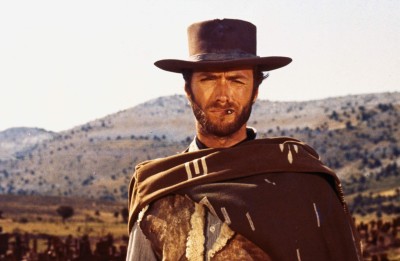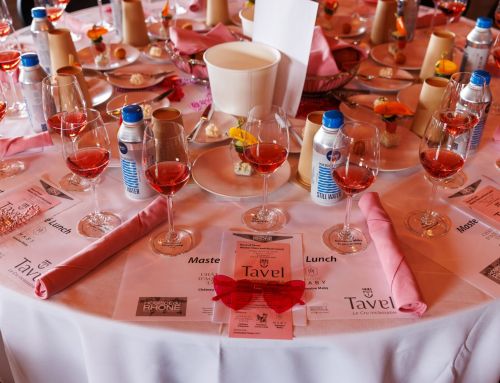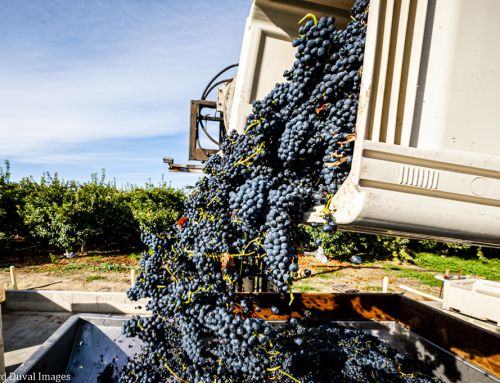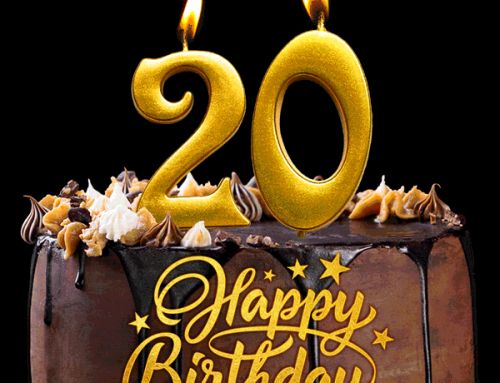 This is the first in a three-part series on Washington wine. Read part II. Read Part III.
This is the first in a three-part series on Washington wine. Read part II. Read Part III.
There has been a great deal of handwringing and soul searching in the Washington wine industry since Ste. Michelle Wine Estates told growers it was canceling 40% of the company’s fruit contracts this summer. Much of it has focused on what the implications might be for the state and what needs to be done now to get Washington to the next level.
In a series of three articles, I explore what Washington wine has done well, what it has done less well, and where the state has failed. Today, let’s tackle the first, what has gone well for Washington wine and/or what the state innately has going for it. For the purposes of this exercise, I have limited the list to 10 items.
Washington Wine: The Good
1. In the last 50+ years, Washington has established itself as a world-class wine region.
When Washington first came onto the modern-day wine scene in the 1960s with the founding of Associated Vintners (now Columbia) and Ste. Michelle Vineyards (now Chateau Ste. Michelle), the sentiment was Washington was too “north, cold, and wet” to grow wine grapes successfully.
Over the last five decades, the state has dispelled that notion. Washington has become the nation’s second largest wine region and has made wines that compete with the very best from around the world.
In a seminal moment, in 2009, Wine Spectator named a Washington wine as its number one wine in the world. In the intervening years, international projects have launched in Washington, and big players have come in from California, further validating the work that has gone on in the state. Washington has come a very long way in just over 50 years.
2. A large number of wineries make high quality wines.
In 1999, Washington had fewer than 100 wineries. Flash forward to today and the state is home to over 1,000 wineries. Better still, there is a large number of wineries making high quality wine.
Go to tourist hot spots like Woodinville or Walla Walla Valley, for example, and there are more high quality wineries than one can visit in several days or even a week. That is a major change from 20+ years ago, when both of those areas were home to mere handfuls of wineries.
3. The small size of Washington wineries allows them to make direct connections with consumers, assisting with sales.
Over 90% of Washington wineries make fewer than 5,000 cases per year. These are small, family-run wineries, where the person that you meet in the tasting room is often the person who drove the truck to pick up the grapes and who made the wine.
This allows consumers to create a direct connection to the winery that is far more powerful than traditional marketing could be. Winemakers and winery owners build long-term relationships with customers that become critical to the brand’s success in a way that could never be done at a large winery. These small wineries are the backbone of Washington’s success.
4. Washington has carved out a number of unique growing regions.
In 1983, 40 years ago this year, Yakima Valley was approved as Washington’s first federally approved grape growing region. The following year, Columbia Valley and Walla Walla Valley were approved. In recent years, there has been a steady drum beat of newly approved appellations, as growers and winemakers explore new regions within Columbia Valley.
Today Washington is home to 20 federally approved grape growing regions, with more in the pipeline. In many respects, the state is just beginning to explore the possibilities of these regions and how they are distinct from each other.
5. Washington is able to grow a wide assortment of varieties well.
Early on in the state’s life as a modern day grape growing region, it was clear that Riesling excelled. Ste. Michelle’s Riesling came out on top in a Los Angeles Times competition in 1974. Shortly thereafter, Cabernet Sauvignon was also proven a winner, with Leonetti Cellar recognized by the predecessor of Wine & Spirits Magazine as the best Cabernet in the U.S. for its inaugural, 1978 vintage.
If we look at Washington today, the state grows over 100 varieties, including everything from Aglianico to Zinfandel. Many of these varieties excel in eastern Washington’s desert climate. Indeed, it seems as if Washington can grow most anything, given its varied elevations, aspects, heat units, and soils.
6. Producers in Washington can start up quickly as they don’t have to plant vineyards, leading to a lower barrier of entry and quick growth of the industry.
One of the keys to Washington’s meteoric growth in producers in the last 20+ years is that wineries do not need to plant their own vineyards to get started. In large part due to sites planted for Ste. Michelle, the state has over 400 growers. Many of them are happy to work with small producers on a custom level.
This low barrier to entry has upended the traditional model, where one plants a vineyard, waits several years for it to become productive, and then waits several more before the first wines are released. It’s also considerably lowered the financial commitment. Better still, some of these new producers quickly make some of the state’s best wine.
7. The wines are, generally speaking, well-priced relative to their quality.
One of the best parts of Washington is that the wines can offer a lot of bang-for-the-buck. This is true whether one is talking about a $20 wine or a $200 wine.
Indeed, surely one of the reasons that Wine Spectator named the 2005 Columbia Crest Reserve Cabernet Sauvignon as its wine of the year in 2009 was the quality-to-price ratio. The wine cost $27 and scored 95 points. In Washington, one can enjoy high quality wines across price points and often pay considerably less than comparable quality wines from other regions.
8. Wineries being separated from vineyards allows them to make wine anywhere, broadening the impact within the state and enabling success.
A key aspect of Washington wine is that growers and wineries are typically separated from each other. Most of the state’s grapes are grown in eastern Washington, and then winemakers take the grapes back to their home location to vinify them. This might be a few miles away or it might be hundreds.
This has allowed wineries to spring up all over the state. Wherever one is, there is a winery near. This is true from the Olympic Peninsula in the west all the way to Pullman to the east. In this way, the wine industry impacts every part of the state. Additionally, it allows wineries to be in locations they feel are best suited for their commercial success.
9. There is a pioneering spirit and cooperation in Washington’s wine industry that is rare.
Just about every winemaker who comes to Washington from another region comments on the level of camaraderie and cooperativity that exists within the state’s industry. It is rare and something that has fueled the state’s success, with everyone feeling that they are in it together and wanting to help each other.
There is also very much a feeling of the Wild West in the state. There are no rules in what is made in Washington, how it is made, or where it is made. Rather, those chapters are still being written. This allows growers and winemakers to explore new directions and reach new heights.
10. Washington is well-positioned relative to others for the upcoming climate crisis.
While the climate crisis is going to impact every part of the wine industry, including Washington, the state is well-positioned relative to other west coast wine regions. The first reason is the state’s northern latitude. Washington’s short, bright growing season is likely to be extended as temperatures warm. Additional areas will also become suitable for planting.
The second reason is water. While water wars are coming, as large swaths of the country are increasingly impacted by severe drought, water remains, relatively speaking, fairly abundant in Washington compared to areas to the south.
* * *
In the next segment, a look at what Washington has done less well. There we will see that many of Washington wine’s strengths also tie into its weaknesses.
NB: This article has been updated.
NOTE: Northwest Wine Report is now partially subscription-based. Please subscribe to support independent content and reviews on this site. It’s the only way that this site can continue.
To receive articles via email, click here.







Looking forward to Part II
Excellent! Thank you.
Sean, great summary, thank you.
I would add the wine community’s enology & viticulture education commitment. There are several examples-
Walla Walla Community College Institute for Enology & Viticulture, WSU’s Viticulture & Enology Wine Science Program & Wine Business Management Program, among others. Our wine community walked the talk and made significant time & financial investments in education early on to establish the foundation for a knowledgeable workforce at a time when the industry was growing exponentially.
Debbie, I 100% agree. Glaring omission on my part. The educational institutions in the state have been a huge success story. I see the impacts of them on the tasting table.
Excellent article. As an economic geographer, I particularly appreciated your insight that the business of wine is important to all parts of our state. Not many people appreciate the importance of that.
Thanks for another great article.
Great info, thank you. One minor typo in #4 – 1983 was 40 years ago, not 50. Thanks!
Thanks for the catch Jaime!
Excellent encapsulation of the “Good”. Looking forward to parts 2 & 3!
Well done Sean! With all that going for us, hard to see how the future could be anything but bright…
This is great, Sean! I find all three parts of this series fascinating, and agree with all.
It’s interesting to put the above points in context with your subsequent parts’ points that qualify them:
(1) … but has yet to gain greater national and international awareness for its wines.
(2) … but there are too few producers making wine at the upper reaches of quality that capture media and wine connoisseur attention.
(3) … but the recent focus on direct sales risks making wines that are ultimately over-priced for the national market.
(4) … but Washington needs more wines with a specific sense of place.
(5) … but two of Washington’s most distinctive varieties are currently out of favor with consumers.
(6) and (8) … but too few producers are estate vineyard based, which is one way to drive higher quality, and Washington needs more wines with a specific sense of place.
(7) … but Washington doesn’t make enough mid-priced wines.
(9) … but Washington can, at times, have too much group think and be too insular, failing to appreciate the larger wine industry or put its wines in context.
(10) You don’t qualify this one but wildfires are and will, of course, happen more frequently, starting earlier and ending later.
Ultimately, more people—public and industry—need to somehow connect *emotionally* with Washington wines. Since it’s not a state where the vineyards-winery-winemaker are usually all in the same place, and given the (real or imagined) travel hurdles to WA wine country, it’s about making the personal connection with winemakers. The incredible growth of Woodinville (and more Bellevue/Seattle events) will help in that regard, but—though it’s never a cheap endeavor to host quality wine events around the country—there seems to be a dearth of human WA wine presence outside the PNW. Would love to see that become more of a priority for WA wine commission/alliances.